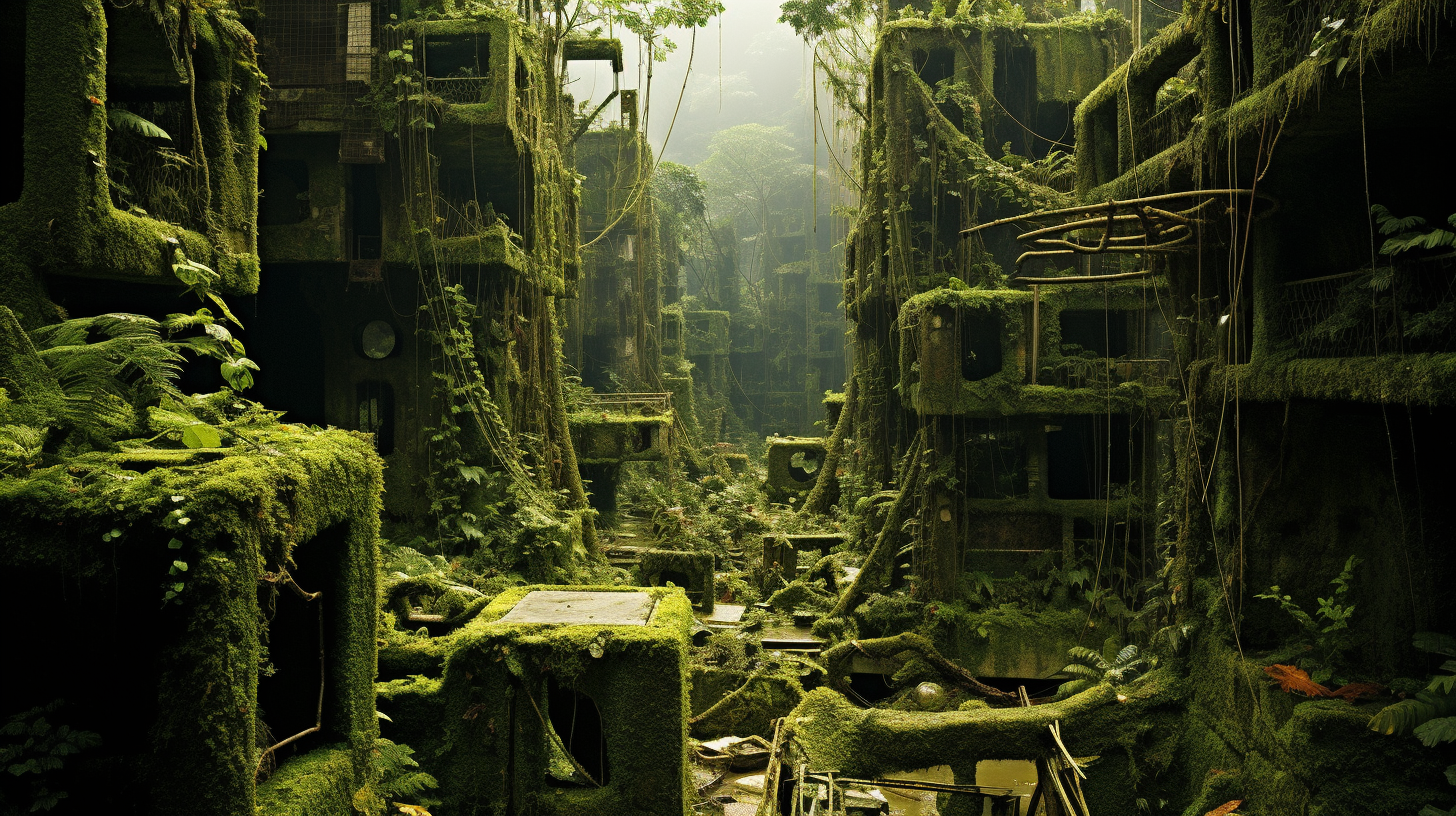Once, our metropolises stood as monolithic grey sentinels—a testament to the triumph of human architecture over the natural world. Now, they are being painted in a different hue, as we witness the inexorable march of foliage through our cracked sidewalks. These concrete jungles are not merely submitting to the onslaught of roots and vine; they are transforming into intricate green labyrinths.
In our cityscapes, skyscrapers – once gleaming with glass and steel – are now latticed with the vibrant green of creeping ivy and resilient moss. On these vertical plains, urban agriculture takes root, bringing sustenance and rural nostalgia to the cloud-kissing terraces. It seems impossible that amidst apocalyptic forecasts and ecological collapse, nature has found a way to assert itself with such vigor and vivacity.
But seeing this verdant takeover, one can’t help but wonder: Is it too late for humanity’s redemption, or is Gaia mounting a comeback? The streets, once roaring with traffic, now resonate with the rustle of leaves and the soft patter of fauna. Small patches of community gardens bloom where chain stores once stood, and wildlife roams with an air of reclaimed authority.
Rewilding initiatives have brought a semblance of the natural world back into our urban centers. Pioneers of this movement have veiled our edifices in green, cultivating biodiverse sanctuaries atop rooftops and within once-abandoned lots. Their efforts lure pollinators, transforming grey to green, despair to – dare I say – hope?
But let us not be fooled by this apparent reclamation of nature. The world outside these green labyrinths is a stark contrast, rife with ravaged landscapes and climatic turmoil. While we celebrate these oases of life amidst urban desolation, it serves as a persistent reminder of our environmental failures.
In the heart of these labyrinths, you may find a unique ecosystem proliferating – one that embraces what was left to waste. Fragments of wildlife, surprising in their diversity, have carved out existences in these man-made chasms of wilderness. Yet, the specter of climate catastrophe looms, with each whisper of wind through the leaves sounding like a haunting refrain for the world outside.
This unconventional merger of urban life with wildlands suggests a future where cities may serve as the final bastions for biodiversity. How ironic it is, then, that our environmental neglect has crafted harbors of resilience in the very heart of our habitats paved for extinction.
These labyrinthine jungles do not allow us to forget the precipice on which we stand. Each rooftop garden and vertical farm reiterates both our ingenuity and our folly. Aesthetic? Undeniably. Effective? Marginally. Yet, we face a paradox – as these urban spaces evolve into ecosystems, they do not signify the remediation of a world on the brink. Rather, they serve as nature’s memoir in an age where human narratives are fraught with brevity.
To traverse this green labyrinth is to walk a line between what-could-have-been and what-is. The sprawl of our cities, once consumed by our own hands, is now a canvas for a different story. These green labyrinths remind us of loss and offer a glimpse of a potential future where nature is not just an afterthought.
As nature writes her testament on the walls of our metropolises, these living labyrinths are not to be mistaken for recreation. They are testament and memorial, a symbiotic enigma where humanity’s legacy intertwines with the prospects of life persisting against all odds.
